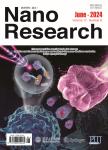One-pot facile fabrication of carbon-coated Bi2S3 nanomeshes with efficient Li-storage capability
One-pot facile fabrication of carbon-coated Bi2S3 nanomeshes with efficient Li-storage capability作者机构:School of Energy & Collaborative Innovation Center of Suzhou Nano Science and Technology Soochow University Suzhou 215006 China Key Laboratory for the Physics and Chemistry ofNanodevices Beijing National Laboratory for Molecular Science College of Chemistry and Molecular Engineering and State Key Laboratory of Rare Earth Materials Chemistry and Applications Peking University Beijing 100871 China
出 版 物:《Nano Research》 (纳米研究(英文版))
年 卷 期:2014年第7卷第5期
页 面:765-773页
核心收录:
学科分类:0808[工学-电气工程] 081704[工学-应用化学] 0809[工学-电子科学与技术(可授工学、理学学位)] 07[理学] 08[工学] 0817[工学-化学工程与技术] 0805[工学-材料科学与工程(可授工学、理学学位)] 0703[理学-化学] 070301[理学-无机化学] 0702[理学-物理学]
基 金:the National Natural Science of China (NSFC) Support of this work by the Ministry of Science and Technology of the people's Republic of China (MOST)
主 题:Bi2S3 碳包覆 存储能力 制作 存储材料 简便 锂 可再充电电池
摘 要:Layered bismuth sulfide (Bi2S3) has emerged as an important type of Li-storage material due to its high theoretical capacity and intriguing reaction mechanism. The engineering and fabrication of Bi2S3 materials with large capacity and stable cyclability via a facile approach is essential, but still remains a great challenge. Herein, we employ a one-pot hydrothermal route to fabricate carbon-coated Bi2S3 nanomeshes (Bi2S3/C) as an efficient Li-storage material. The nanomeshes serve as a highly conducting and porous scaffold facilitating electron and ion transport, while the carbon coating layer provides flexible space for efficient reduction of mechanical strain upon electrochemical cycling. Consequently, the fabricated Bi2S3/C exhibits a high and stable capacity delivery in the 0.01–2.5 V region, notably outperforming previously reported Bi2S3 materials. It is able to discharge 472 mA·h·g−1 at 120 mA·g−1 over 50 full cycles, and to retain 301 mA·h·g−1 in the 40th cycle at 600 mA·g−1, demonstrating the potential of Bi2S3 as electrode materials for rechargeable batteries.



